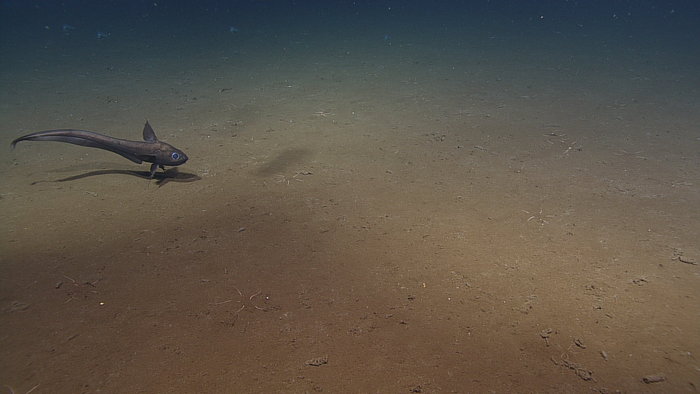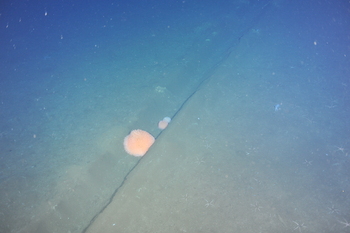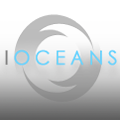After a daylong steam, we arrived at the Axial Base Site (PN3A) after dinner on August 4th, and almost immediately launched the ROPOS ROV with a junction box (LJ03A) full of instruments to install. After detaching from and plugging in the junction box, ROPOS began a survey of the planned cable lay route, flying low over the sediment to identify any hazards or seafloor features that might snag the cable. As a deep-sea biologist biologist Mike Vardaro (OSU) kept one eye out for hazards and the other looking for interesting benthic organisms (animals that live on or in the sediment that covers the seafloor).
We didn't see nearly as many fish or planktonic organisms in the water column at this site, but once the ROV arrived at the bottom (2600 meters down) we were shocked at how dense the seafloor community was. The seafloor was covered with feeding ophiuroids (aka brittle stars) and small herds of Peniagone sea cucumbers. Various other species, including rattail fish, pom pom anemones, and giant sea stars were witness to our deployment activities. The dense biological activity may have something to do with the topography at this site, which sits at the base of the Axial Seamount. When currents hit a point of high elevation (like a seamount), they are forced upwards, which can create blooms of plankton and animals that feed on plankton when the nutrient-rich bottom water nears the surface. The students onboard are very interested in the animals we've seen, and are working them into the projects they're working on during this cruise leg. Julie Nelson (an educator from Grays Harbor College) has written up a blog post that examines the differences between the scientists who are working on this leg of the cruise. Commentary during dives is very different when you have a geologist, a physicist, or a biologist in the room.
We are currently in the process of using the ROCLS cable system to install the extension cables that will link the Primary Nodes, junction boxes, and the eventual deep profiler and HPIES (Horizontal Electrometer Pressure Inverted Echosounder) at this site. The profiler is a small vehicle that travels up and down along a vertical mooring cable between the surface and the seafloor, taking measurements of various oceanographic parameters as it moves along. The HPIES measures the horizontal electrical field, the bottom pressure, and the acoustic travel time from the seafloor to the sea surface to characterize the properties of the water column. The deep profiler mooring deployment will begin tomorrow, once all the cables are laid, and hopefully soon we'll get some video of the profiler moving up and down the wire, collecting data!





